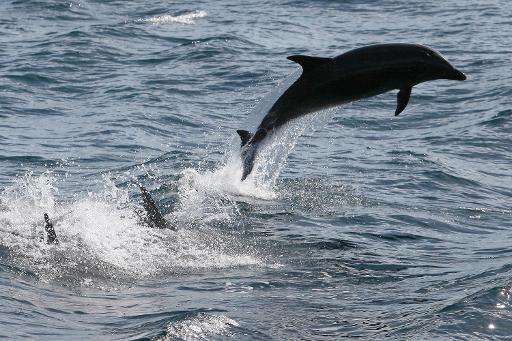Solomon Islands dolphins pay heavy price for teeth

Residents of the tiny village of Fanalei in the Solomon Islands killed more than 1,600 dolphins in 2013 for their teeth, a local currency and popular adornment, researchers said Wednesday.
The overall recorded tally from 1976-2013 was more than 15,400, according to research published in the journal Royal Society Open Science.
And despite the efforts of environmentalists to stop the practice, the local price of a dolphin tooth rose from the equivalent of 14 US cents (13 euro cents at today's exchange rate) in 2004 to about $0.70 in 2013.
"The large number of dolphins killed and the apparent incentive for future hunting offered by the increased commercial value of teeth highlight an urgent need to monitor hunts and assess the abundance and trends in local populations," the team wrote.
The Solomon Islands, particularly the island of Malaita where Fanalei is located, have a long history of "drive hunting" dolphins.
Hunters in groups of 20-30 canoes drive dolphin schools from deep to coastal waters by hitting stones together under the ocean surface to create a sound barrier which the animals—mainly spinner and spotted dolphins—cannot escape.
Across the Solomon Islands, the dolphins' teeth are used as currency, for bride price and as jewellery, and they are also sold for cash.
The meat is consumed in the hunting villages or sold to other islands.
The age-old practice appeared to have stopped around the middle of the 19th century, possibly with the introduction of Christianity, according to the study.
But it was revived in 1948, and by the mid-1960s several thousand dolphins were being killed every year. In recent years, villagers have also been capturing live dolphins for export to marine entertainment parks.
In 2010, the US-based conservation group Earth Island Institute reached a deal with the community of Fanalei to stop the cull in exchange for cash.
But by 2013, the hunt resumed as villagers claimed the green group had failed to deliver on its promises.
Prompted by reports of renewed dolphin killing, researchers visited Fanalei in March 2013 to investigate, leading to Wednesday's report.
"Detailed records for the 2013 hunting, up to the time of our visit, included at least 1,500 pantropical spotted dolphins, 159 spinner dolphins and 15 bottlenose dolphins," the team wrote.
"A summary of all available records from 1976 to 2013 documented a minimum total of 15,454 dolphins killed by the Fanalei villagers alone."
The researchers were from the South Pacific Whale Research Consortium, the Solomon Islands' Ministry of Fisheries and Marine Resources, and Oregon State University's Marine Mammal Institute.
While none of the hunted species is listed as vulnerable or endangered, the large toll pointed to a danger of over-exploitation, the team said, pointing to "an urgent need to improve the monitoring of these catches".
More information: Resumption of traditional drive-hunting of dolphins in the Solomon Islands, Royal Society Open Science, rsos.royalsocietypublishing.or … /10.1098/rsos.140524
Journal information: Royal Society Open Science
© 2015 AFP





















